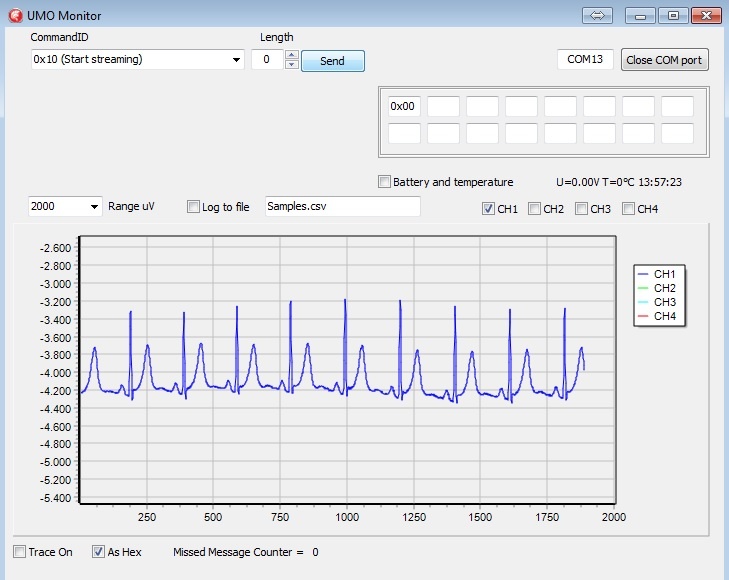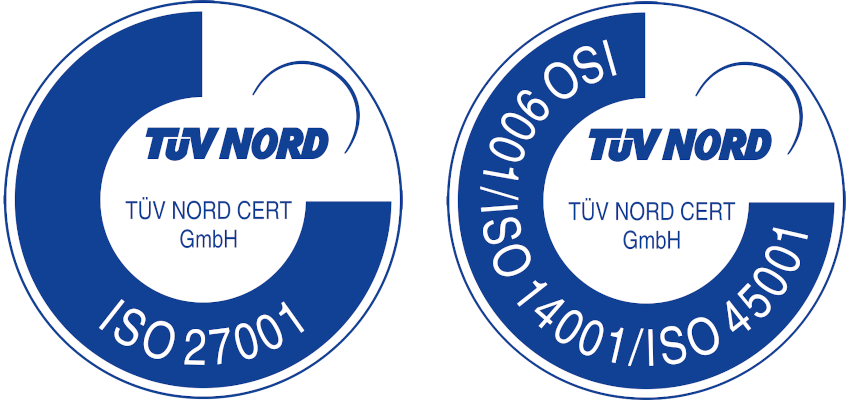Overview
One of our Clients has reached out to us with specific requirement – for treatment of children with neurological development difficulties it is required to develop mobile device for registration of brain waves (EEG), so children could move around and enjoy the therapy which is actually a game which reacts to kid’s brain activity (Neurofeedback therapy). Neurofeedback is a non-invasive and fun method of normalizing brain activity. It is performed by using an EEG amplifier o determine the brain waves used to control a video game or other audiovisual content. We can say that in neurofeedback, the player controls the video game with his thoughts, and in an effort to improve the game, he improves his brain waves.
Common conditions like ADHD, anxiety, depression, concussions, and more occur when your brain waves aren’t working together in perfect balance. Neurofeedback training allows you to retrain specific areas of your brain to bring it back to its functional best. Likewise, your brain won’t work efficiently until all of its regions are working in alignment. This is where neurofeedback comes into play.
Solution
Taking all requirements and circumstances of application in account, we decided to build an ultra portable, battery powered electroencephalograph. Device should be communicating using Bluetooth wireless interface and should be wirelessly charged. As a wearable device, it should be light, and not exceed dimensions which would not fit inside one’s pocket. No wires and cables are needed to connect the device to the equipment (computer) providing neurofeedback-based game. Device should measure four channels simultaneously and be able to stream measured data in real-time.
The whole system is depicted on the following image:
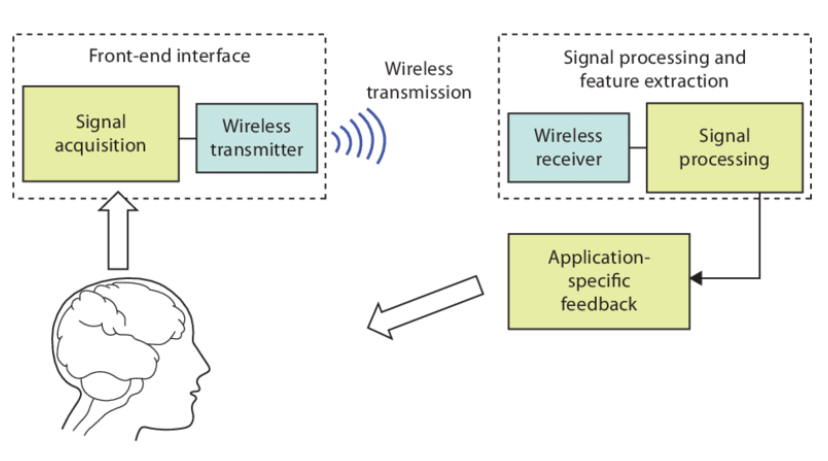
Execution
To ease wearing, round-body enclosure is used, with round socket for electrodes and just one pushbutton with LED feedback for operation. Enclosure is approx. 5 cm in diameter.
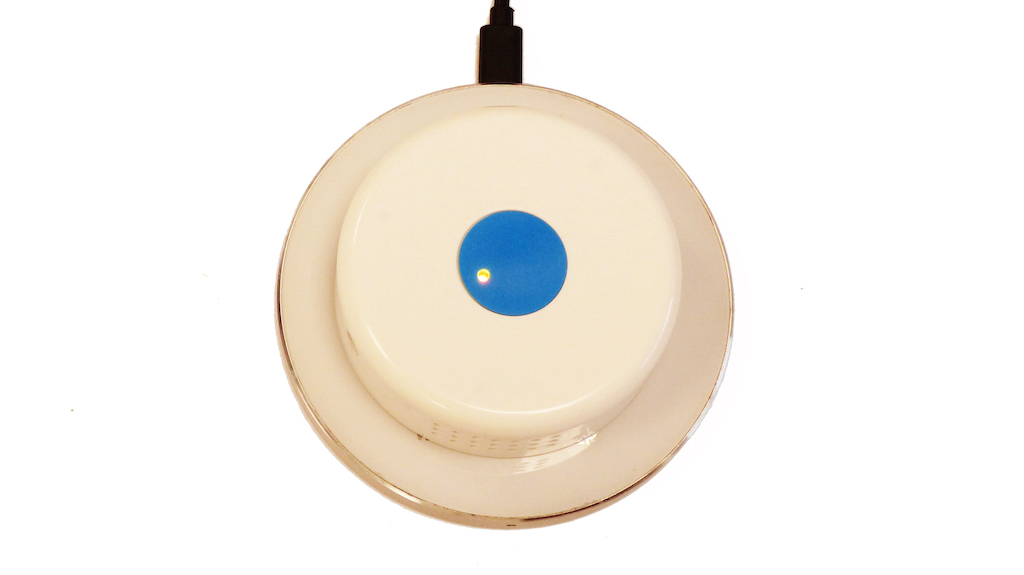
Inside the enclosure, PCB with electronics is situated, with lithium-ion battery, charger coil, and pushbutton attached. Electronics consist of signal amplification and conditioning units, microcontroller with Bluetooth interface and power supply section with wirelessly powered battery charger. Design is utilizing several hardware and software techniques to lower the power consumption on a minimal level, while still ensuring optimal performance of the device itself, using which device has an operating autonomy of several hours.
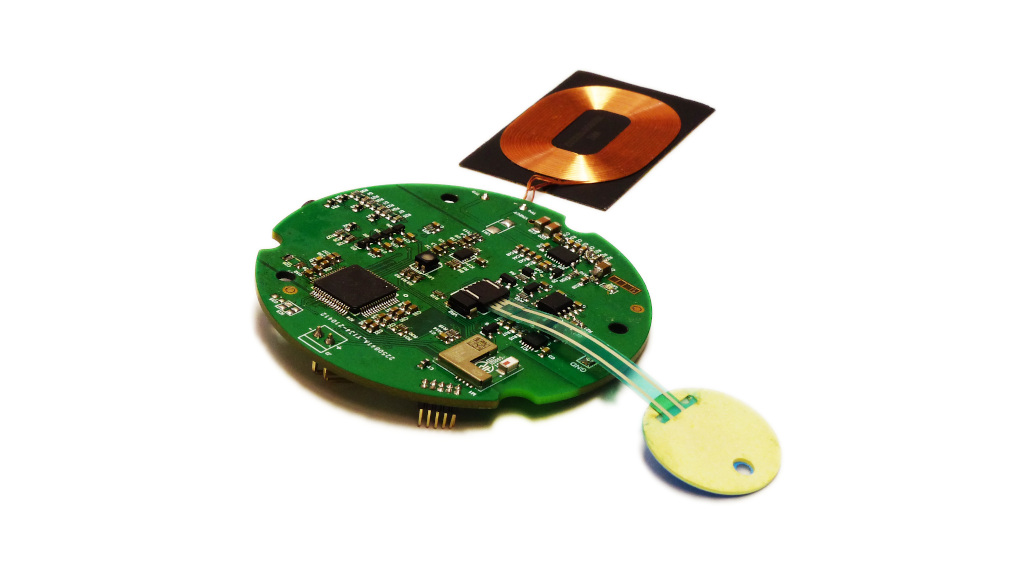
Along with the device itself, software library is developed through which end-applications can access recorded data. For device testing, test application was developed.
